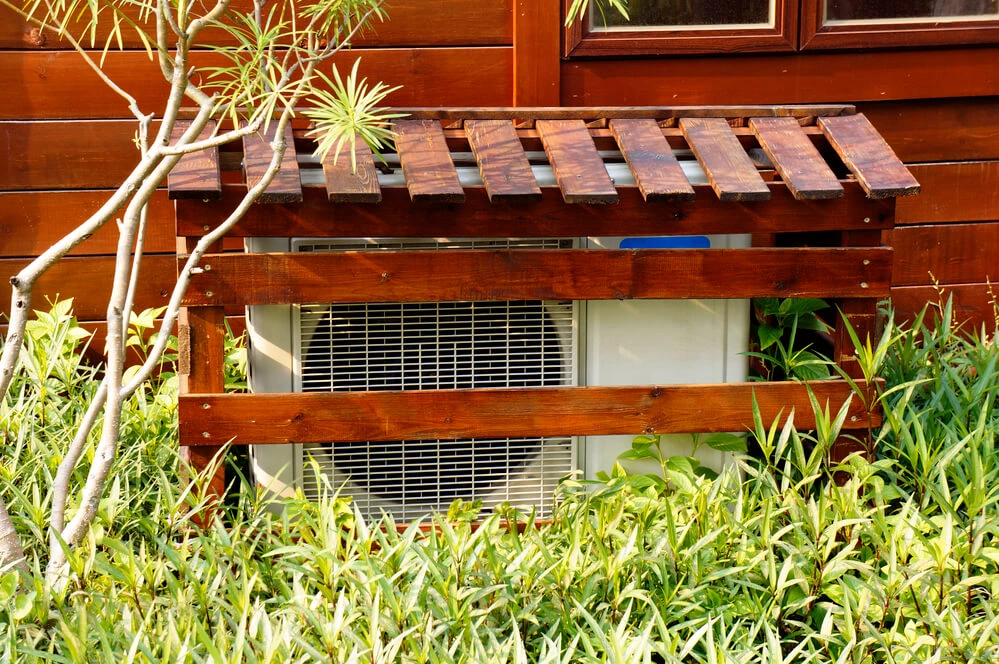With global warming in full effect, the need for an efficient air conditioner can’t be understated. It’s gone from being a luxury to a necessity in a matter of a few decades. When the summer comes around, air conditioners are the primary reason for comfortable conditions in a home, especially when you need to sleep at night. As much as these machines improve daily life, their appearance can be an eyesore. For this reason, you need to know how to hide the air conditioner outside.
Use Plants To Improve Your Landscaping and Cover Your AC Unit
When the outside unit of your air conditioner is in your back or front garden, it will naturally stick out, but you can hide it with beautiful plants surrounding the unit. Apart from making the space visually appealing, plants can help the system operate more efficiently. Since plants have an open structure, they allow for the free flow of air. If you water the plants regularly, it will moisten the air making it easier for the air conditioner to release heat from the inside. Simply ensure that the plants don’t have invasive roots, which could damage the system from underneath. While this is a reasonable plan of action, you should frequently trim the area to ensure it doesn’t grow out of control.
If you don’t have time to take care of the plants or you’re not a fan of the associated pollen, you require a once-off solution to hiding the air conditioner outside. An air conditioner enclosure is suitable for you since it resembles a garden fence and could complement the property’s design. These items are usually available in various colors that can match the paint of your exterior. If you’re unsure about the color, then perhaps the camouflage patterns would suffice. Some heavy-duty options comprise resin and steel, which have ground anchors to support poor weather conditions and the harsh UV rays of the sun. Additionally, air conditioner enclosures have hinged panels that allow you to optimize the concealment in line with the space.
AC Cover Options
A lattice screen and planter box is another option to consider. If you decide to go this route, you need to ensure ample clearance between the screen and the air conditioner for the hot air to escape. The holes in this type of solution will promote the entry of dirt and debris during windy days. You’d need to access this area to clean it regularly or face an inefficient air conditioner. Additionally, you can install a two-sided picket fence since it will cover the outdoor unit’s two sides that are visible to guests.
Alternatively, consider investing in pre-made air conditioner covers. You can add a full fabric cover that’s highly durable and resistant to water. It contains unique air vents that reduce condensation and a hem cord that allows you to set it perfectly over the unit. If the exterior part of the air conditioner is susceptible to leaves, dirt, and other debris, you can opt for a mesh cover that protects the equipment while guaranteeing airflow and preventing the build-up of rain or snow, which could lead to corrosion.
DIY AC Covers
When asking the question of how to hide the air conditioner outside, sometimes the answer resides within. If you’re the DIY type of person and you’d rather get your hands dirty, you can build an air conditioner cover using some wooden planks, nails, and a hammer. Ensure the covering is larger than the unit and has gaps in between to encourage ventilation. You can varnish the wood or paint it a color that suits the rest of the house.
While you’re considering building the cover yourself, perhaps, you should include a door that you can access when you need to remove dirt and debris that lodges itself over time.
Aluminum slats are another viable option to cover the exterior air conditioner unit. Not only do they offer robust, durable protection, but they’re easy on the eye.
Protecting Your AC From The Elements
Most homeowners don’t even think about covering the exterior part of their air conditioner, but it is an integral aspect of HVAC maintenance. Taking care of the system during the off-peak seasons will hold you in good stead for summer and winter. Don’t be lured into the act of covering the system with any makeshift solution as it won’t have the necessary ventilation to release humidity leading to the growth of mold and mildew and an inefficient air conditioner.
It’s essential to cover the external air conditioning unit during winter as well since extreme rain and snow can cause damage to the condenser coils. Icicles that melt or fall can affect the operation of the air conditioner.
Before you purchase a cover, ensure that you measure the air conditioning unit correctly. Bear in mind you need to add a few extra inches to fit the cover over the equipment snuggly. If you don’t know how to hide the air conditioner unit outside, you can have a professional HVAC company handle the task for you.

